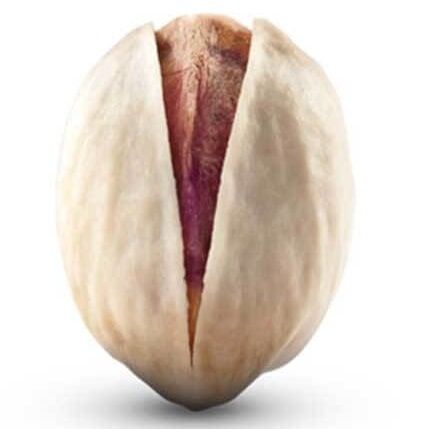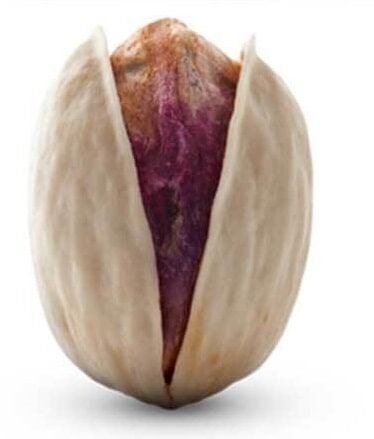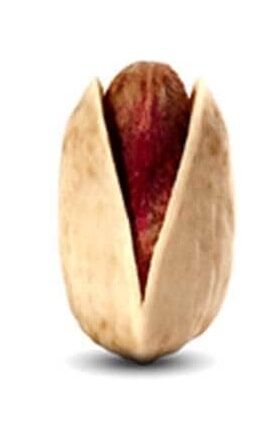Iranian pistachios are healthy, tasty, and aromatic. This quality can be directly attributed to a combination of several factors such as fertile soil, congenial climate, most importantly, sunny weather following the average cold and rainy winters.
Much of the pistachio produced in Iran are grown in Kerman Province with six counties namely, Rafsanjan, Sirjan, Zarand, Kerman, Anar, Shahr-e-Babak, leading the production.
In the following sections, we will be looking at some of the distinctive features of Iranian pistachios, so you can differentiate them more easily from American, Turkish, or other counterparts.
But before delving into Iranian pistachios, it would be helpful if you knew how they measure and express the «size» of pistachios. Pistachios are expressed mostly in «berry count» and that is «the number of pistachio per ounce of pistachio». For example, the size of round (Fandoghi) pistachio is 28 -30, meaning there are between 28 to 30 pistachio nuts in an ounce of Fandoghi pistachio.
Variety of Iranian Pistachios
During the past 100 years, every decade or two, a new variety was developed and became beneficial in several aspects. Curious Iranian farmers would start to take stabs at it by cultivating it on a tiny scale. If it survived enough to become permanent and commercially stable, other farmers would become tempted to use it.
The natural diversity of Iranian pistachios probably equals the number of regions that grow pistachios. The number probably adds up to 90 as of 2022. Each pistachio type has a local name that signifies a region, quality, or shape type. This is one of the main reasons Iranian pistachios have stood the test of time. Diversification and improvement happen by nature mother, and farmers take advantage of the rich diversify.
For example, the size of round (Fandoghi) pistachio is 28 -30, meaning there are between 28 to 30 pistachio nuts in an ounce of Fandoghi pistachio.
Round: A pistachio type is called round if the ratio of the length to the largest diameter is less than 1.5. E.g., “Fandoghi Pistachio” (accounting for 40% of pistachio orchards)
Long: In this type of pistachio, the ratio of the length to the largest diameter is more than 1.5. E.g., “Ahmad-Aghaie” (accounting for 12% of cultivation ), and “Akbari Pistachio” (accounting for 15% cultivation)
Jumbo: Pistachios are considered Jumbo is the berry count per ounce is 20 -26. E.g. “Kalleh-Ghouchi” (accounting for 20% of cultivation)
The second type of classification divides Iranian pistachios into Open and Closed-mouth pistachios. Open pistachios split open when ripen. On the contrary, closed-mouth pistachios don’t split at the suture when ripen and have to be cracked mechanically.
Naturally open (NO) pistachios are called «smiling nuts» and are sold in bulk or retail amounts by Khoshbin Group. Mechanically open (MO) pistachios are mainly used to produce kernels (nutmeats), and are sold in bulk or retail amounts by Khoshbin Group.
All types can be provided in the forms of roasted pistachios, pistachios salted and roasted with added lime.
Fandoghi Pistachio (Round Pistachio):

Fandoghi (round pistachio) is the most wildly known and the most nationally cultivated pistachio in growing areas of the country. It accounts for 74% of the production in Kerman.
This nut has the lowest body shape index compared to other pistachio types and resembles a hazel in shape (the name Fandoghi means hazel in Farsi).
Available Size (pcs/oz): 28-30, 30-32, 32-34
Kalleh Ghouchi Pistachio (Jumbo Pistachio):

Kalleh Ghouchi is giant pistachio. It probably has the largest body shape index across all pistachio types. The name «Kalleh Ghouchi » in Persian means «like a rams’ head» which refers to the shape of the pistachio.
Kalleh Ghochi (jumbo) pistachios have the largest body shape index compared to other pistachios. The delicious taste of this nut is due to its high-fat extent.
This nut has a rich history in cultivation as it’s been cultivated for more than 4000 years. Its present superior position in the market is the outcome of the Iranian farmer’s perfect ability to refine pistachio cultivars.
Available Size (pcs/oz): 20-22, 22-24, 24-26
Ahmad-Aghaie Pistachio (Long Pistachio):

Ahmad-Aghaie Pistachio is probably the most liked and the fastest-growing pistachio type in the country. The cultivar was found and refined by a farmer of the same name, and despite being introduced only recently, its cultivation is growing rapidly.
Contrary to other pistachios, the tree of Ahmad-Aghaie Pistachio needs a shorter time to reach the production stage and it produces a high yield.
Another contributing factor in the spread of this nut is probably its red, hefty kernel and white-cream shell, which adds up to the nut’s profitability and marketability.
The nut is rather large and its fruit is almond-shaped and has the whitest shell hue between the four.
Available Size (pcs/oz): 22-24, 24-26, 26-28, 28-30
Akbari pistachio (Super Long Pistachio):

boasts the highest economic value as it has the largest kernel to shell ratio. The nut is very long and large and the kernel is very visible.
Akbari pistachio is a relatively new nut, introduced by a Kermani farmer of the same name during the 1950s. Its cultivation and popularity have been growing since.
It is an early ripening crop, meaning the new harvest hits the market in late September.
Available Size (pcs/oz): 18-20, 20-22, 22-24
Higher Kernel to In-Shell Ratio
You get a better bang for the buck or more value for your money, buying Iranian pistachios. Iranian pistachios have a high meat-to-shell ratio, meaning that you are buying more amount of edible meats (kernels) for the same amount of pistachios you purchase.
The whole single pistachio, shell and all, weighs about 0.02 ounces (0.57 grams), and the nutmeat (the piece of the pistachio that you eat) makes up about 80 percent of that weight.
Roastability
Iranian pistachios are more suitable for roasting at high temperatures (160 to 180°C) owing to higher unsaturated oil content. Roasting is described as cooking using dry heat, which would cook the food equally on all sides. Most nuts are roasted without their shell, but pistachios are often roasted in-shell.
Pistachios are generally roasted to improve their aroma, taste, and crunchy texture. while destroying any live bacteria from the roasted output. Lower roasting temperatures suggested by some pistachio suppliers will not accomplish the two abovementioned benefits.
During roasting, nuts lose some of their moisture. That describes why the fat content per ounce is somewhat higher in roasted nuts. A roasted nut weighs lighter than its raw form.
Taste and Safety
Iranian pistachios have a world-famous flavor that is unrivaled. This unique advantage is due to having a higher unsaturated oil content and can be improved by roasting the pistachios at higher temperatures.
High-temperature roasting treatment reduces any bacterial pollution, which may be present in raw pistachios. The following list indicates the five notable factors that make Iranian pistachios tasty:
- The soil is more fertile which can affect the texture, taste, and quality pistachio nuts
- Different regions of the Earth have different electromagnetic frequency where it also affects each product
- Pistachios are native to the region of Iran, where have had thousands of to reproduce and diversify
- No pesticides, GMO, artificial chemicals are used in their production, making them as natural as possible
- The weather condition, mentioned in the introduction, also blends in with other factors to further affect the taste and quality of Iranian pistachios.
Integrity and texture of the kernel
Probably the most appealing feature of Iranian pistachios to the eyes of some who have never had this nut before is the integrity of the kernel. Integrity means how good the kernel can stay intact or never falls into pieces.
One great advantage that Iranian pistachios have over American or Turkish counterparts is the fact that the kernel hardly ever breaks into pieces while in a shell or after shelling.
Regardless of the type, Iranian pistachio kernels are tasty, flavorsome, and have a tenable texture owing to their rich contents of unsaturated fatty acids, as opposed to American or Turkish pistachios in which the kernel is loose in the shell and breaks or peels quite easily.
The tastefulness of Iranian pistachios comes at the expense of their shelf life. They are at the height of their tastiness when consumed fresh.
Marketability
There is a well-known fact as «a good product sells itself» and it is definitely true about Iranian pistachios. The net profit margin is larger with Iranian pistachios as they reduce the need for advertisement. Companies can pass some of the savings to consumers.
Фисташковые ингредиенты
The final attribute of Iranian pistachios that may enthrall you is the number of pistachio nuts ingredients derived from them.
Here, we have alluded to some of the distinctive features of Iranian pistachios that we think are important to both suppliers and consumers.
Iranian pistachios are known as the happy or smiling nut – yes, when the hard-shell splits, it can seem like a smiling face. They are identified as a luxury product in some countries like Japan and Germany.


